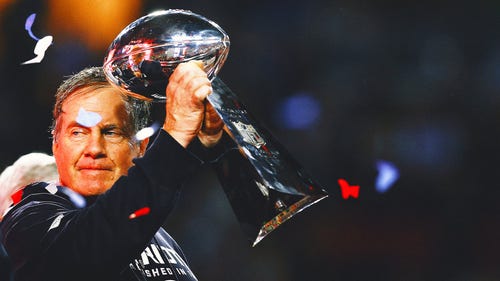
Goodell talks safety in youth sports
The most probing question asked of NFL commissioner Roger Goodell didn’t come to the half-dozen reporters assembled at a youth football practice earlier this month.
It came from Raquel Garfield, a mother who had two sons practicing on the Centreville High football field behind Goodell.
“I’ve seen NFL players look fine when they’re playing and then, 10 years later, they can barely walk. They can barely think,” Garfield said. “How do I know what to trust on the long-term implications on whether to let them play?”
It’s a question thousands of parents around the nation have likely wrestled with in the aftermath of the thousands of lawsuit filed by former NFL players and the increasing amount of research that has linked brain trauma to debilitating health issues later in life. Goodell was at this event on Oct. 10 with pediatric neuropsychologist and researcher Gerard Gioia and youth football officials as part of USA Football’s launch of “Heads Up Football," a program aimed at reducing head injuries.
The NFL, as altruistic as these efforts seem to be, could have another goal: keeping enrollment in youth football — which feeds directly into high school, college and, eventually, the pros — from dropping.
“There are a number of factors that contribute to that,” Goodell told reporters after the Q&A period with parents. “Some it’s the economy. Some of it is competition with other sports. I have seen it with my own kids. They’re being asked to play one sport rather than multiple sports and they’re playing (the one sport) for multiple seasons.”
Participation in youth football has remained flat at about three million participants from ages 6-14 since 2006, according to USA Football spokesperson Heather Bremer. The numbers for 2012 will not be available until early next year.
“Heads Up Football” is currently a pilot program at three youth leagues around the nation, including SYA youth football here in suburban Washington DC. (It is expected to roll out nationwide next year.) Along with improved tackling techniques, the program also promotes correct equipment fitting guidelines and coach training on concussion protocols.
“We are still evaluating and making chances to the program, but it’s fundamental that we concentrate on taking the head out of the game,” said Mark Meana, a member of the USA Football board of directors and chairman of the board of commissioners for the Fairfax County Youth Football League. “That’s a major shift. It’s a direction we want to go in.”
The league that Meana sees encompasses much of Northern Virginia and has 6,000 participants. He said the goal isn’t just to raise concussion awareness in football players, but educate parents about concussions in other aspects of life. For example, Garfield had a son who sustained two concussion in elementary school unrelated to football.
Meana actually takes exception that concussions seemed to be viewed by many as a football-only problem.
“It’s making folks hesitant,” said Meana when asked if the media attention on concussions has dissuaded parents from signing their children up for football. “We need to make people feel more comfortable that their kids can participate in this sport safely.”
Goodell said the NFL, which has helped fund the “Heads Up Football” also is attempting to set an example.
“The changes we are making in the rules, the changes we are making in the equipment, the (addition of an athletic) trainer spotter (in the press box) — all those things make the game safer,” Goodell said. “Even the (New Orleans Saints’) bounty issue, making sure those types of things aren’t part of the game makes the game safer.”
As for Garfield’s question, there were a few seconds of silence before Gioia, the neuropsychologist, answered that evidence is still emerging on how people react to head trauma and he would be in favor of his kids playing football if safety was a priority.
Goodell nodded during the answer.










